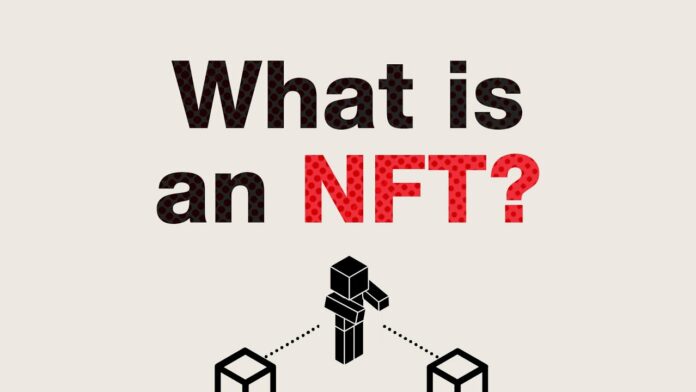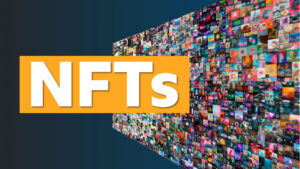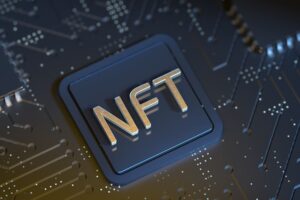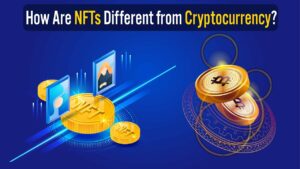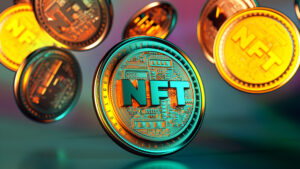This post will explain What Is An NFT. Complete Guide About Non-Fungible Tokens will be explained in this article. Digital assets known as NFTs are kept on a network. They can even be connected to physical assets and symbolize different types of digital content. The ownership of these assets is documented in the blockchain, resulting in an unchangeable record that makes it possible to sell and trade NFTs. If you are unfamiliar with blockchain technology, you can read What Is a Blockchain Developer (and How Do I Become One?) to get a basic introduction and look up definitions in the glossary at the foot of this page.
What Is An NFT Complete Guide In 2023
In this article, you can know about What Is An NFT Complete Guide In 2023 here are the details below;
What does NFT stands for?
NFT is an acronym for non-fungible currency. Despite being generally regarded as a new technology, the first non-fungible token (NFT) was created in 2014 by tech entrepreneur Anil Dash and digital artist Kevin McCoy. NFTs can be dated all the way back to 2012, when Meni Rosenfeld released the “Colored Coins” proposal. “Colored Coins” explains the methodology for representing and managing the ownership of real-world assets on a blockchain.
What does non-fungible mean?
Non-fungible is a word that applies outside of the NFT space. In law, finance, or commerce, it is also used to describe assets that are challenging to exchange for comparable products. To put it another way, non-fungible goods are special. They cannot be swapped out for comparable items. A great non-digital illustration of a non-fungible good is a diamond. Diamonds come in many various shapes, qualities, and styles. They are distinct from other diamonds and cannot be substituted due to these characteristics.
Non-fungible vs. fungible
US dollar bills, on the other hand, are an illustration of a fungible commodity. One $50 note can be exchanged for five $10 bills, two $20 bills, or two $5 bills. Fungible is a term used to define anything that can be used interchangeably. Products of equal or nearly equal value can be readily replaced by fungible goods.
What is a non-fungible token?
A digital identity stored in the blockchain is a non-fungible token. It cannot be altered, replaced, or copied. Non-fungible tokens certify a digital asset’s legitimacy and possession. A non-fungible token essentially serves as possession documentation. Because blockchains are digital, this kind of document cannot be changed.
Describe an NFT.
NFTs are evidence of the acquisition of an asset. They are not actually the commodity. Because of these conditions, almost anything can be converted into an NFT. You can represent a tangible thing using a digital object in addition to other types of digital objects. Some items that can be (and have been) transformed into NFTs are listed below:
- videos and social media messages are examples of digital content.
- media documents, like GIFs
- such as skins and characters for video games
- digital clothing, like NFT shoes
The difference between cryptocurrency and NFTs
Cryptocurrency and NFTs are not the same entity, despite their similarities. But the digital money used for trading NFTs is cryptocurrency. The worth of cryptocurrencies and NFTs is where they most significantly diverge. Like the US dollar, the value of cryptocurrencies relies on their utility. Dollars would lose value if every business in the US chose to stop taking them because they are only used for economic transactions. NFTs have worth that is both economic and non-economic. An NFT’s value is determined by elements like investors, collectors, and rarity because it can symbolize anything, including artwork and video games. In Meta’s What Is the Metaverse? course, you can learn more about NFTs and cryptocurrencies and examine how the Metaverse will affect these and other sectors.
Examples of NFTs
The most well-known NFTs and NFT compilations can be found on the list below.
Cryptopunks. Cryptopunks is a well-known compilation in the NFT community because it was one of the first. In September 2021, Cryptopunk #8857 gained notoriety after selling for $6.63 million, or 2000 Ether (ETH), the coin of the Ethereum network. Cryptopunk #8857 is one of only 88 Zombie Cryptopunks in existence, which contributes to its exorbitant price.
Bored Ape Yacht Club. Due to its ubiquity among famous people and prominent sportsmen, the Bored Ape Yacht Club collection is a classic example of NFT. Its notoriety is largely due to the popularity of Bored Apes as social media profile images. Notably, Bored Ape #3739 sold in September 2021 for $2.9 million.
Lazy Lions. Among those in the NFT community, avatars from the Lazy Lions NFT series are fashionable. 10,000 Lazy Lion NFTs were issued, and between 3,000 and 4,000 of them were sold out within the first five hours. The most expensive NFT in this collection as of July 2022 is Lazy Lion #6632, which is presently listed for 2,000 ETH or $2,120,500.
Why do NFTs look like that?
You may have observed how similar commonplace NFTs look to one another. The use of generative coding and layering is to blame for this occurrence. Creating a collection of images from a list of visual components is the process of layering. Add “hat” and “shirt,” for instance, to your selection and you’ll get variations like a top hat, polo shirt, Hawaiian shirt, and cowboy hat. Then, you would use generative coding or a computer program to stack each of these layers on top of one another in a random sequence. Additionally, creators can enter restrictions like “the avatar cannot be wearing both a Hawaiian shirt and a top hat.”
From a little over a hundred different components, using these rules and variations, it is possible to build thousands of different avatars. The randomization of a character in a role-playing video game is comparable to how programmatically produced NFTs operate. (RPG). RPGs frequently offer countless combinations for accessories, accessories, and facial characteristics. Instead of customizing your character, you can choose to have the game create a random combination of each element for you if you do this.
Why are NFTs so expensive?
An NFT’s worth is influenced by a wide range of factors. A few of the important elements are:
- The reliability of the source
- Relevance of the performer
- The present NFTs industry
- The NFT’s usefulness
According to Kevin McCoy, co-creator of the original NFT, NFT pricing could be broken down into a series of questions:
“Do you think things will eventually be digital? Do you think that scarce digital goods will eventually be worth more than common ones? The rarest digital goods will be the most valuable if both questions are yes. The crypto-collectors presently hold this viewpoint [1].
Why do people buy NFTs?
The justification for an NFT buy will probably differ greatly from person to person. Investments may be influenced by individual preferences or company loyalty because NFTs can be made from collectible items. Some NFT collections aim to build an exclusive owner group, which increases sales among those wishing to join. The decision to purchase an NFT is ultimately subjective.
Pros of NFTs
Decentralization. NFT buying, selling, and dealing are decentralized, just like cryptocurrency. Instead, identical, immutable data is sent to every user of the blockchain network in a copy. (in the form of a distributed ledger). As a result, there is no longer a need for a third party to serve as a mediator because transactions can be completed without mutual trust. By enrolling in an online school like Duke University’s Decentralized Finance (DeFi): The Future of Finance Specialization, you can learn more about decentralized finance.
Networking. Real-world benefits might be linked to NFT creator’s collection sales, depending on the creator. Access to exclusive events and membership in organizations or clubs are a couple of these benefits.
Artist advocacy. Anil Dash, a co-creator of the original NFT, was serving as a consultant to media organizations and auction houses when the notion was first conceived. For this position, Dash admitted to “obsessively thinking about the provenance, ownership, distribution, and control of artworks,” according to an Atlantic article. NFTs were designed to use blockchain technology to safeguard creators from exploitation. By putting artists in touch with buyers and investors directly, NFTs intended to aid artists in protecting their works as opposed to working with third-party businesses that frequently siphon earnings.
Cons of NFTs
Environmental impact
Negative environmental effects of NFTs.Major cryptocurrencies like Bitcoin and Ether are used to exchange NFTs. (ETH). To verify transfers, these cryptocurrencies employ a Proof of Work protocol. A blockchain transaction’s validity is established by Proof of Work, which is essentially a mathematical riddle that demonstrates a certain amount of computational power has been used. A common name for this procedure is mining. The puzzles get harder and take more computational power to solve as the networks get larger. Environmentalists and finance regulators contend that the energy required to support this digital economy is not sustainable [2]. Mining alone used more energy in 2020 than the complete country of Switzerland.
Community impact
Due to high energy expenses, miners often move their operations to regions with lower energy prices. These mining operations may increase locals’ energy expenses and result in cities using more hydropower than they are allowed to. Mining activities can also produce a continuous, observable vibration in the area [4] depending on the extent of the hardware.
Legal right. The rights to the digital asset that resides on the blockchain are acquired by the owner when an NFT is bought. The underlying material is not granted to them any legal rights. Regardless of who owns the NFT, if another party trademarks the work of art or object that an NFT symbolizes, that party maintains control over the legal rights to the intellectual property (IP).
Value fluctuation. NFT value can change depending on the present social climate because it is not purely economic. For instance, Twitter co-founder Jack Dorsey sold his very first message as an NFT last year for more than $2.9 million. Today, cryptocurrency entrepreneur Sina Estavi is the owner of Dorsey’s NFT tweet. He set the asking price for the NFT at $48 million, and it received just seven total bids, varying in value from $5 to $277.
Key takeways
- Digital assets known as NFTs are kept on a network. They serve as proof of possession and authenticity for both tangible and intangible objects.
- Cryptocurrencies and NFTs are not equivalent. Cryptocurrency is used to exchange NFTs.
- A number of variables, including societal relevance and scarcity, affect an NFT’s value.
- You do not automatically acquire ownership rights to the piece of art or other asset that the NFT represents by purchasing an NFT.

